Steven Moran
Phonetic Segmentation of the UCLA Phonetics Lab Archive
Mar 28, 2024Abstract:Research in speech technologies and comparative linguistics depends on access to diverse and accessible speech data. The UCLA Phonetics Lab Archive is one of the earliest multilingual speech corpora, with long-form audio recordings and phonetic transcriptions for 314 languages (Ladefoged et al., 2009). Recently, 95 of these languages were time-aligned with word-level phonetic transcriptions (Li et al., 2021). Here we present VoxAngeles, a corpus of audited phonetic transcriptions and phone-level alignments of the UCLA Phonetics Lab Archive, which uses the 95-language CMU re-release as our starting point. VoxAngeles also includes word- and phone-level segmentations from the original UCLA corpus, as well as phonetic measurements of word and phone durations, vowel formants, and vowel f0. This corpus enhances the usability of the original data, particularly for quantitative phonetic typology, as demonstrated through a case study of vowel intrinsic f0. We also discuss the utility of the VoxAngeles corpus for general research and pedagogy in crosslinguistic phonetics, as well as for low-resource and multilingual speech technologies. VoxAngeles is free to download and use under a CC-BY-NC 4.0 license.
A Measure for Transparent Comparison of Linguistic Diversity in Multilingual NLP Data Sets
Mar 06, 2024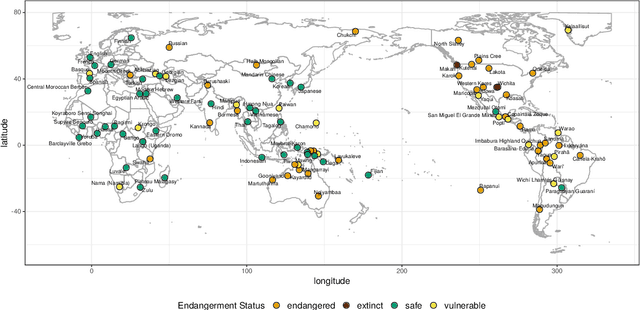
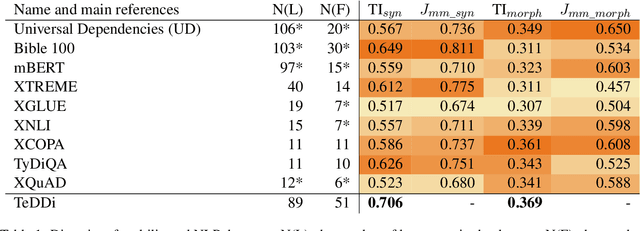
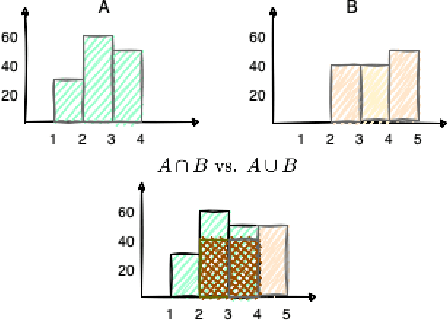

Abstract:Typologically diverse benchmarks are increasingly created to track the progress achieved in multilingual NLP. Linguistic diversity of these data sets is typically measured as the number of languages or language families included in the sample, but such measures do not consider structural properties of the included languages. In this paper, we propose assessing linguistic diversity of a data set against a reference language sample as a means of maximising linguistic diversity in the long run. We represent languages as sets of features and apply a version of the Jaccard index suitable for comparing sets of measures. In addition to the features extracted from typological data bases, we propose an automatic text-based measure, which can be used as a means of overcoming the well-known problem of data sparsity in manually collected features. Our diversity score is interpretable in terms of linguistic features and can identify the types of languages that are not represented in a data set. Using our method, we analyse a range of popular multilingual data sets (UD, Bible100, mBERT, XTREME, XGLUE, XNLI, XCOPA, TyDiQA, XQuAD). In addition to ranking these data sets, we find, for example, that (poly)synthetic languages are missing in almost all of them.
Automatic Sound Event Detection and Classification of Great Ape Calls Using Neural Networks
Jan 05, 2023
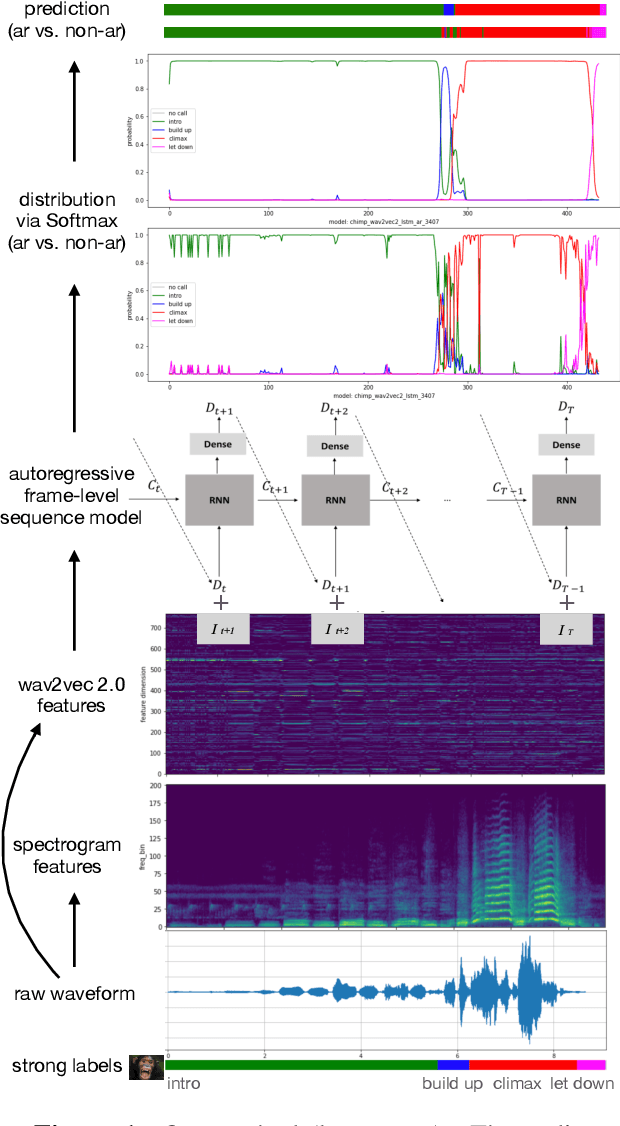
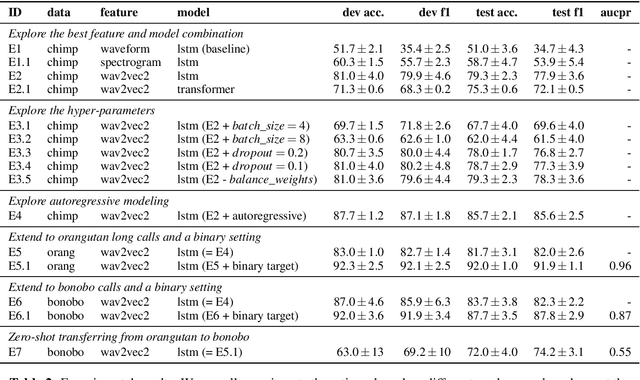
Abstract:We present a novel approach to automatically detect and classify great ape calls from continuous raw audio recordings collected during field research. Our method leverages deep pretrained and sequential neural networks, including wav2vec 2.0 and LSTM, and is validated on three data sets from three different great ape lineages (orangutans, chimpanzees, and bonobos). The recordings were collected by different researchers and include different annotation schemes, which our pipeline preprocesses and trains in a uniform fashion. Our results for call detection and classification attain high accuracy. Our method is aimed to be generalizable to other animal species, and more generally, sound event detection tasks. To foster future research, we make our pipeline and methods publicly available.
 Add to Chrome
Add to Chrome Add to Firefox
Add to Firefox Add to Edge
Add to Edge